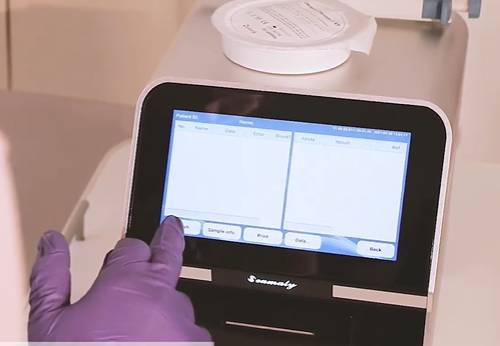release time:2021-04-20 16:25:28
In animal diagnosis, biochemical detection of animals is essential. What are the tips for detecting blood ammonia (NH3) in dogs and cats?
The ammonia produced by the catabolism of various amino acids in various tissues in the body and the ammonia absorbed from the intestinal tube enter the blood to form blood ammonia.
The
sources of blood ammonia include endogenous and exogenous:
Protein
in food is degraded by intestinal bacteria (exogenous)
Ammonia
is produced when body tissues use amino acids as energy sources (endogenous)
(1)Poor
liver function
Poor
liver function cannot convert ammonia into urea. When more than 60% of liver
function is lost, blood ammonia will rise. Therefore, clinically, high blood
ammonia mainly represents poor liver function or portal shunt.
(2)Primary hyperammonia
For
example, the Dalmatian dog has a congenital defect of the urea cycle, ammonia
is converted into urea through the urea cycle. When the urea cycle is defective
and lacks enzymes, blood ammonia will rise.
(3)Severe uremia
During
uremia, some of the blood urea nitrogen penetrates into the intestinal lumen,
and the intestinal bacteria degrade it into ammonia, and it is absorbed back
into the body through the hepato-intestinal circulation. If the liver function
is poor, it may cause high blood ammonia.
The
detection of blood ammonia is easily affected by various factors, and the
correct operation can minimize the influence of external factors.
(2)Exercise: The endogenous ammonia increase after the animal's strenuous exercise will also increase the physiological increase of blood ammonia
Sample
collection:
1.
Anticoagulation tube: Lithium heparin anticoagulation tube is recommended.
2. The operation should be standardized during specimen collection, and the mixing action should be gentle and gentle to avoid hemolysis of the specimen, which may lead to a false increase in blood ammonia.
3.Sample transportation and storage
The samples should be sent for inspection immediately after collection to reduce the contamination of blood ammonia in the sample by the catabolism of ammonia and the catabolism of nitrogenous substances in the sample.
3.Avoid violent shocks.
The
effect of specimen status on results.
(1):Hemolysis: The blood ammonia concentration in red blood cells is higher than
that in plasma, and sample hemolysis will increase the blood ammonia
concentration
(2)Hyperbilirubinemia and Lipidemia: The high concentration of bilirubin and lipid turbidity in the plasma will interfere with the enzymatic determination of blood ammonia and affect the accuracy of the test results.

2021-04-22
The blood coagulation reagent with four indexes launched by Chengdu Seamaty Technology Co., Ltd. used with SMT-120V, an automatic biochemical analyzer, is suitable for preoperative examination of pets, which can help doctors to understand whether the animal's hemostatic function is defective. The preoperative examination can prevent intraoperative bleeding.

2021-04-20
The most common blood tests in pet hospitals are biochemical tests and routine blood tests. Veterinary biochemical instrument is an instrument for biochemical examination of animals. Before routine physical examination and sterilization surgery, pet doctors will recommend biochemical examination.

2021-04-20
Generally, blood samples for veterinary biochemical testing can be divided into three types: whole blood, serum and plasma.Anticoagulated whole blood is the most common type of sample in veterinary biochemical testing. For anticoagulation tubes, different colors of anticoagulation tubes represent different anticoagulants and uses.